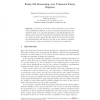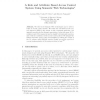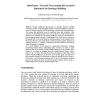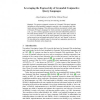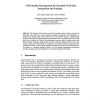OTM
2007
Springer
14 years 9 months ago
2007
Springer
The problem of inconsistency handling in ontologies has recently been attracting a lot of attention. When inconsistency occurs in an ontology, there are mainly two ways to deal wit...
OTM
2007
Springer
14 years 9 months ago
2007
Springer
In this paper we describe a fuzzy Description Logic reasoner which implements resolution in order to provide reasoning services for expressive fuzzy DLs. The main innovation of thi...
OTM
2007
Springer
14 years 9 months ago
2007
Springer
We show how Semantic Web technologies can be used to build an access control system. We follow the role-based access control approach (RBAC) and extend it with contextual attribute...
OTM
2007
Springer
14 years 9 months ago
2007
Springer
Despite significant advancement in ontology learning, building ontologies remains a task that highly depends on human intelligence, both as a source of domain expertise and for pro...
OTM
2007
Springer
14 years 9 months ago
2007
Springer
As more semantic web services become on the Internet, it is feasible that users collaborate among them to save efforts in complex web solutions by sharing and reusing existing sema...
OTM
2007
Springer
14 years 9 months ago
2007
Springer
A Knowledge Based Network is a type of ontological content based network. As Knowledge Based Networks scale, semantic interoperability becomes an important issue since larger popul...
OTM
2007
Springer
14 years 9 months ago
2007
Springer
We present a pragmatic extension of a Semantic Web query language (including so-called grounded conjunctive queries) with a termination safe functional expression language. This ad...
OTM
2007
Springer
14 years 9 months ago
2007
Springer
In the last years, there has been an increasing interest in the performance of reasoning on the Semantic Web in presence of large ABoxes. Traditional reasoners make heavily use of ...
OTM
2007
Springer
14 years 9 months ago
2007
Springer
Practical scalability of Description Logic (DL) reasoning is an important premise for the adoption of OWL in a real-world setting. Many highly efficient optimizations for the DL ta...
OTM
2007
Springer
14 years 9 months ago
2007
Springer
The Semantic Web vision involves the production and use of large amounts of RDF data. There have been recent initiatives amongst the Semantic Web ...

